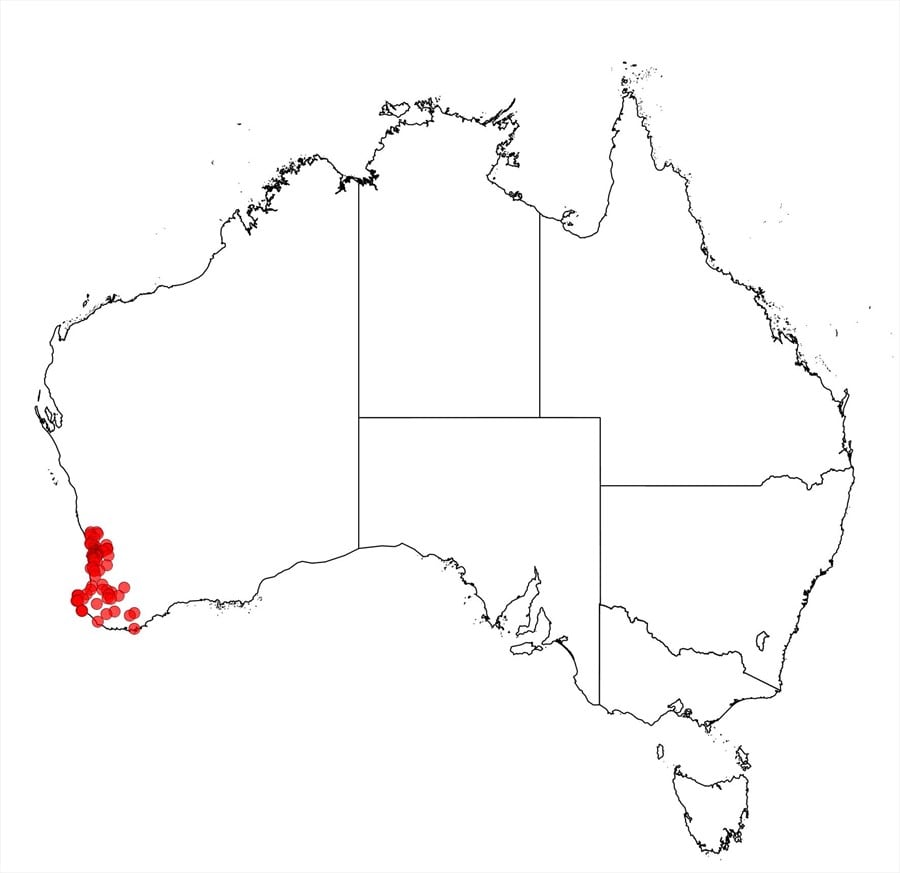Acacia huegelii Benth.
WATTLE
Acacias of Australia
Family
Fabaceae
Distribution
Occurs from the Moore R. S to Collie and Yallingup, and further S from Northcliffe and Kendenup, south-western W.A.
Description
Erect or semiprostrate multistemmed shrub normally 0.3–0.4 m high. Branchlets pubescent or glabrous. Stipules setaceous, 2–4 mm long, erect. Phyllodes dimidiate, broadest near or above the middle with the adaxial margin conspicuously rounded, 7–16 mm long, 2–7 mm wide, acuminate, pungent, commonly shallowly recurved, with indumentum as on branchlets except sparser; midrib prominent, intersecting adaxial margin below cusp; gland obscure, 0–1 mm above pulvinus. Inflorescences simple, 1 per axil; peduncles 6–12 (–16) mm long, pubescent or glabrous; heads globular, 20–35-flowered, cream or white; bracteoles narrow, acuminate, exserted in buds. Calyx absent; petals 5, rarely 6, 1-nerved. Pods ±flat, curved, to 40 mm long, 3.5–5 mm wide, coriaceous, red-brown, coarsely striate, hirtellous. Seeds oblong, 4 mm long, mottled; aril terminal, conical, whitish.
Phenology
Flowers during summer months.
Habitat
Grows in sand in Banksia or Eucalyptus woodland or open forest; W of Northcliffe it grows in interdunal swales with Kunzea sp. and Agonis flexuosa.
Specimens
W.A.: Northcliffe area, A.Annels 1856 (Manjimup Regional Herbarium); Yallingup, Dec. 1930, W.E.Blackall s.n. (PERTH); Wooroloo, M.Koch 1815 (LY, NSW, P, PERTH, W); Lake Banganup, Jandakot area, B.R.Maslin 1391 (PERTH).
Notes
Closely allied to A. forrestiana. Phyllodes of some forms resemble A. imparilis.
FOA Reference
Data derived from Flora of Australia Volumes 11A (2001), 11B (2001) and 12 (1998), products of ABRS, ©Commonwealth of Australia
Author
B.R.Maslin
Minor edits by J.Rogers
This identification key and fact sheets are available as a mobile application:
URL: https://apps.lucidcentral.org/wattle/
© Copyright 2018. All rights reserved.








